I bought some nice clean peaches (after spending about 20 minutes minutely examining each and every peach in the bin at Safeway to find one's that were completely unblemished and perfect - I'm sure they thought I was some OCD nutcase) and put them on a nice glass plate.
My goal was to try to get some nice rear lighting to create a halo effect on the peaches, but I apparently don't have the technique down yet.
I tried putting a snooted light behind the peaches with a fill light toward the side. I ended up with really harsh lighting and a lot of flare in some images (below). Although this photo isn't terrible, it isn't at all what I wanted.
I just couldn't get the effect that I wanted (I think because I need to actually have the flash physically hidden behind the peaches), so I moved the snooted flash to the side (below).
This wasn't much better.
In my frustration at the harshness of the light, I pointed one flash at the ceiling and the snooted flash at the back wall, in effect saying 'to hell with directional light!'.
Amazingly enough I ended up with the richest, softest lighting you could imagine!
An added bonus were the incredible reflections in the glass plate. What makes these images work for me is how the clean neutral lines of the plate contrast with the round richness of the peaches. These photos are winners in my book, both in successfulness and simplicity.
Lessens Learned
- If one kind of lighting isn't working, try something else; don't just keep taking pictures in the hope that one will magically work.
- Food photography is all about contrasts - in shape, color, texture, you name it. But if you lack those contrasts, your images will be boring.
- Harsh light is harsh. I'm sure it has it's place, but not in this shoot.
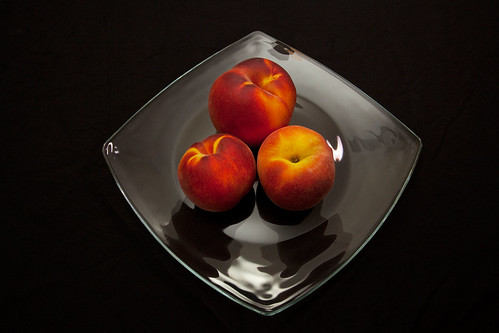
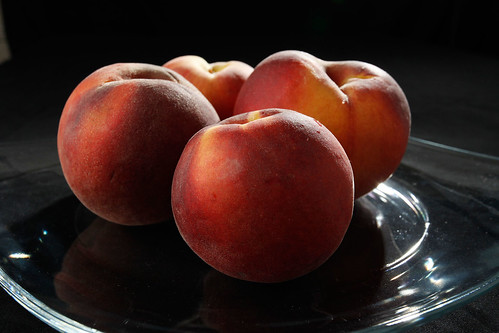


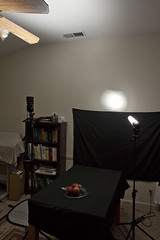
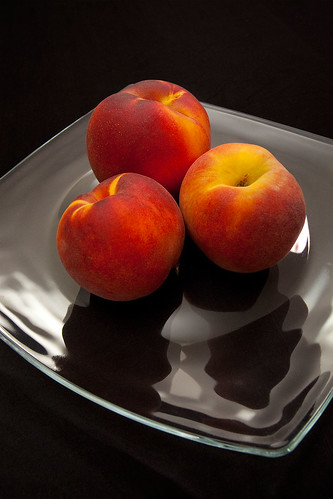
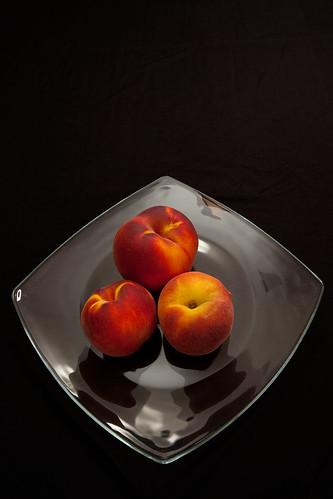
No comments:
Post a Comment